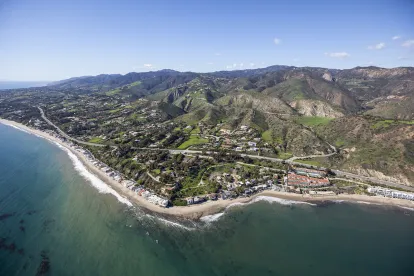In late June, California’s Fourth District Court of Appeal upheld a Superior Court decision in Save Our Access v. City of San Diego, providing clarity for determining when a “later activity” is beyond the scope of an existing Program Environmental Impact Report (PEIR) under the California Environmental Quality Act (CEQA). Specifically, the Court held that a proposed ballot measure initiated by the City of San Diego to exclude the Midway-Pacific Highway Community Plan area from a voter-enacted height limit did not qualify as a “later activity” within the scope of the existing PEIR for the Community Plan Update because the PEIR relied on the height limit in its analysis of the potential environmental impacts. The Court held that the proper remedy is for the City to conduct further analysis of the potential impact of taller buildings in the Community Plan area in order to comply with CEQA before proceeding with the ballot measure.
Background and Procedural History
In 1972, San Diego voters passed Proposition D in order to prevent new buildings or additions to existing buildings from exceeding a height of 30 feet within the City’s Coastal Zone, which spans the length of the City along the Pacific Ocean, extending to Interstate 5. The stated goals of Prop. D were to preserve the character of the affected communities, keep the beaches usable, and limit congestion and related ills that would result from higher buildings and population density. Perceived ills included increased crime, noise, and pollution, as well as obstruction of ocean breezes, sky, and sunshine.
In 2018, the City approved the Community Plan Update and certified the related PEIR. The Community Plan Update sought to guide future development in the area, including promoting a mix of commercial, office, industrial, institutional, military, civic, and residential uses; the latter was to include a variety of housing types. Although the height limit originally excluded Downtown San Diego, and was subsequently amended to exclude several other areas of the City, the Community Plan area north of Downtown remained subject to the height limit. To this end, the Community Plan Update recognized the 30-foot height limit and its purpose to protect coastal views.
However, in July 2020, the San Diego City Council authorized a vote by the electorate on whether the 30-foot height limit in the Community Plan area should be removed. This ballot initiative is referred to as Measure E.
The City subsequently issued a Notice of Determination, finding that the proposed removal of the height restriction was a “later activity” consistent with the area’s PEIR and would not result in new significant impacts or substantially increase the severity of previously identified significant effects.
Measure E was approved by 57% of the voters. However, Save Our Access filed a petition for writ of mandate in August 2020 to challenge elimination of the height limitation. Save Our Access argued that the City had failed to comply with CEQA, and that, specifically, the ballot measure was a project subject to environmental review as it would result in significant environmental impacts that were not adequately addressed in the PEIR The Superior Court agreed with this line of argument.
Court of Appeal Decision
On appeal, the City argued that it was not required to prepare an EIR because the PEIR had adequately considered potential environmental impacts from the removal of the height limit. The Fourth District Court of Appeal disagreed.
First, the Court found evidence that the PEIR expressly recognized the application of the 30-foot height limit to the Community Plan area. This was most clearly embodied through the Community Plan Update’s caveat that the “Coastal Height Limit Overlay Zone limits the height of new buildings to protect coastal views.” In addition, the court was unconvinced by the City’s argument that the public could reasonably interpret references to City-wide base zones in the Community Plan Update to encompass a future removal of the height limit. This was especially unconvincing, the Court stated, in light of renderings included in the Community Plan Update that only depicted proposed development that complied with the 30-foot height limit.
Second, the Court held that there was a fair argument that removal of the height limit would have significant adverse effects on the environment. The Court’s review of the record determined that the PEIR did not consider environmental impacts on views and other potential issues associated with development over 30 feet. In contrast, members of the public raised exactly these types of concerns in public comment to the City Council. Because the City did not analyze such concerns, there is at least a fair argument that there are potential unexamined environmental impacts of the ballot measure – including, but not limited to, the potential impact of tall buildings on views.
For these reasons, the Court squashed the ability for the City to utilize this ballot measure. Before it may proceed, the City must conduct further analysis of the potential environmental impacts of the proposed removal of the height limit from the Community Plan area to comply with CEQA.
Implication
In Save Our Access, the Court did not limit the “later activity” benefit of PEIRs, which still do not require a subsequent EIR or other environmental document, provided that the agency can approve the activity as being within the scope of the project covered by the PEIR. In other words, PEIRs remain a valuable tool, offering agencies more flexibility for project development years into the future.
Rather, what Save Our Access does is emphasize that “later activities” conducted pursuant to PEIRs must be within the scope of the authorizing PEIR. In other words, “later activity” is not a catch-all for any project in an area subject to an existing PEIR. It cannot be used to evade CEQA’s requirements to analyze environmental impacts and mitigate as necessary.
Agencies drafting a PEIR should, to the extent possible, consider future changes to land use and analyze their potential environmental impacts within the PEIR. While no one has a crystal ball, a careful consideration of likely changes to land use in the subject area – rather than only existing conditions or imminent changes – will grant as much flexibility as possible by increasing the eligibility of development to qualify as a “later activity” in the future.
Agencies analyzing activity in an area operating under an existing PEIR should pay particular attention to the warning of Save Our Access. In such situations, agencies should heed the caution of CEQA Guidelines Section 15168(c)(2) to avoid a similar outcome:
Whether a later activity is within the scope of a [PEIR] is a factual question that the lead agency determines based on substantial evidence in the record. Factors that an agency may consider in making that determination include, but are not limited to, consistency of the later activity with the type of allowable land use, overall planned density and building intensity, geographic area analyzed for environmental impacts, and covered infrastructure, as described in the [PEIR].
As for the City, the decision in Save Our Access may end up being more of a of non-sequitur than anything else. When the Superior Court issued the writ in December 2021, San Diego Mayor Todd Gloria opted to implement a dual-track approach. Under this strategy, the City pursued both an appeal and a “do over” ballot measure. This subsequent and similar ballot measure – Measure C – passed in November 2022 with 51% approval by the electorate.
While Measure C is the subject of pending litigation brought by Save Our Access, in placing the measure on the ballot, the City attempted to remediate past follies and prepared a supplemental EIR that studied the visual impacts of buildings up to 100 feet tall, as permitted by the different zones in the Community Plan area prior to placing the initiative on the ballot. The analysis studied 10 view corridors that look into the Community Plan area, and found there would be significant and unavoidable impacts to views and neighborhood character with the removal of the coastal height limit.




 />i
/>i
